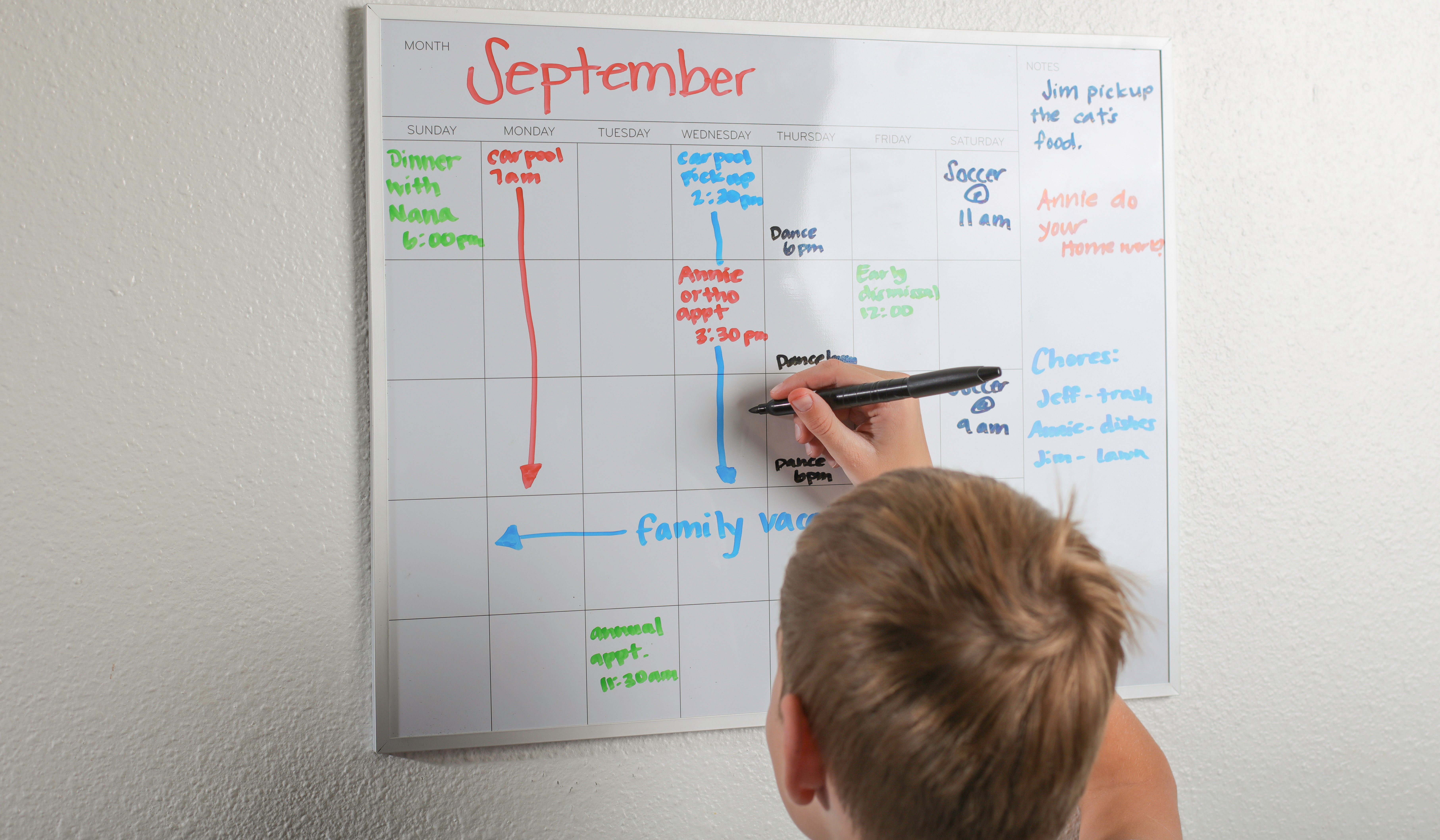How to set a schedule for back-to-school success

It's that time of year - you can almost smell the sharpened pencils and fresh notebook paper. Students will be returning to school before you know it and getting used to a whole new routine. Set them (and yourself) up for success by getting a jump start on a back-to-school schedule. Developing a plan ahead of time can reduce anxiety and get everyone on the same page.
Start scheduling early and update often
Create a digital or tangible folder to hold all the school schedule information as it comes in. Then, a few weeks before school starts, review everything you've gathered for school start and end times, before or after care times, extracurricular activity dates and times, school closures, holidays, family activities, etc. Once you have a good outline of the schedule, determine bed times, wake times and screen time accordingly. Try to slowly adjust to the school schedule starting a week or more before school starts.
Organize it all
Break out the schedule in a way that makes sense for your family. One recommendation is to have a daily schedule of activities in a common area for daily occurrences like:
- Bedtime and wake times
- Routine steps like brushing teeth, eating - morning, after school and evening
- Chores
- Free time
On a calendar, include anything "extra" that will take time during the school year. Some examples include:
- Extracurricular activities
- Play dates
- Family events
- Vacations
- Holidays
- Medical and personal appointments
- Social gatherings
Plan the schedule as a team
Setting a schedule is a chance for everyone in the family to share expectations and goals for the year. All members of the family should contribute. The older the child, the more involved they will be in developing the schedule. Inviting your child to be an active participant will give them an opportunity to express their needs and make choices when possible. The family can consider schedules and routines from the previous school year to talk through what worked well and what didn't. Important parts of the schedule can stay and adjustments can be made.
Make the schedule visible
Everyone who uses the schedule should have easy access to it. Think about what formats work best for your family members. For younger children who are not able to read, a visual schedule of activities with pictures can be used. A visual representation of a schedule (whether digital or tangible) serves as a reminder of activities and can improve time management and prevent over commitment.
It is helpful to place these calendars in an area of your home you visit daily, like the kitchen, and pair your family's daily review with an activity you already complete every day. For example, you could review the schedule during breakfast or review the next day's schedule at dinner. Encourage older kids and teens to review their planner/calendar daily after school and schedule time to complete school-related tasks.
Get help from scheduling tools
Digital calendar apps are great tools for creating and managing schedules. Calendar invites can be sent to all members of the family with devices to improve communication. Calendar apps also have reminder alerts to help you remember. Many school districts and some extracurricular activities have the option to sync your digital calendar with their schedule, saving you from having to enter events manually. Visit your school district's or activity's website to see if this is possible.
For older children and teens, use of a digital or tangible planner for school assignments is encouraged. Check with your child's school to see if these tools are available to students. Combining a school planner with a personal calendar can make scheduling more efficient.
Adjust the schedule as you go
After the first week or two of the school year, revisit the schedule and adjust as needed. Try these questions to determine if a change is needed:
- Is your child having trouble getting out of bed in the morning?
- Are we getting to activities on time?
- Are there ways to be more efficient with your time?
- Do we have new information about the school year to include (e.g., homework expectations)?
Revisit the schedule when there is a new expectation or activity, or there is a problem. You can also schedule regular check-ins to review expectations, discuss concerns and compromise with your children and teens when appropriate.
Other scheduling tips
Put anything you need to remember onto your schedule. Don't take up precious brain space trying to recall tasks. Use alarms, reminder alerts, timers and visuals to help you.
Practice color coding. Give each member of the family their own color that represents their activities on the calendar. This will make it easy for each person to scan the calendar for their commitments.
Schedule less preferred activities before preferred activities. For example, if your child delays completing homework or studying because they don't want to stop playing video games, have them complete school assignments first to increase motivation and compliance.
Create balance. A schedule helps you see where you spend your time. Use it to include a balance of family, school and social activities without over commitment. Make sure there is enough time for sleep. The National Sleep Foundation recommends preschool children 3-5 years old to receive 10-13 hours of sleep; school age children 6-13 years old receive 9-11 hours of sleep and teens 14-17 years old receive 8-10 hours of sleep.
With continued practice and communication about the schedule, your family will be on their way to a successful school year. Don't forget to schedule plenty of fun!
